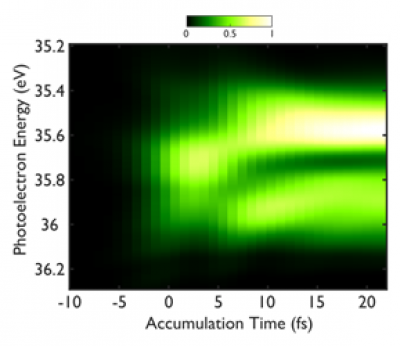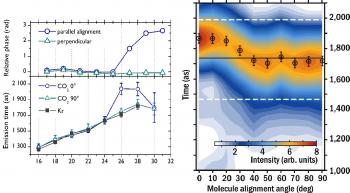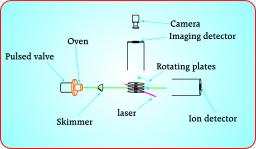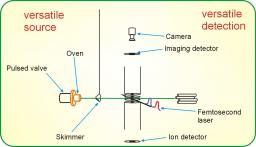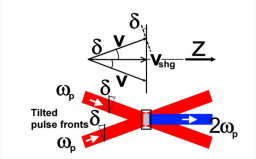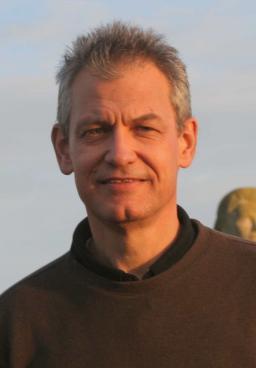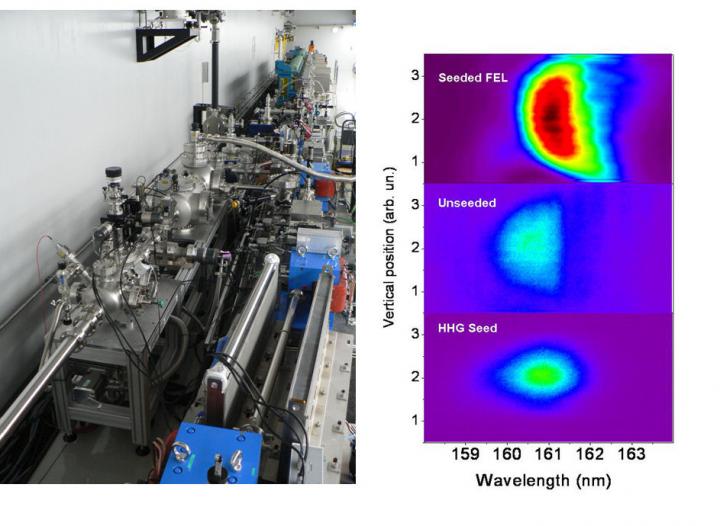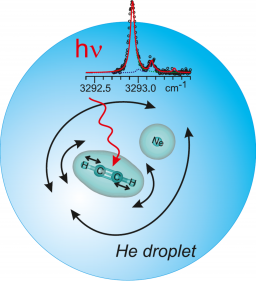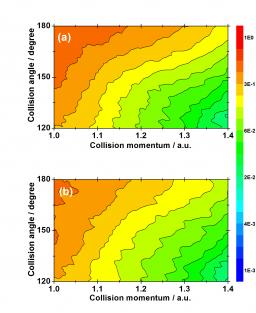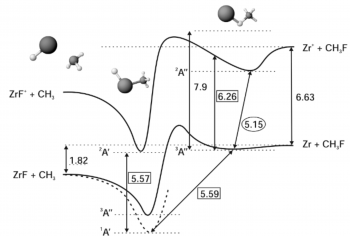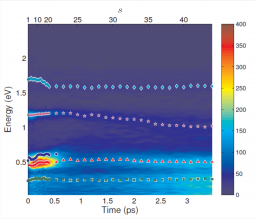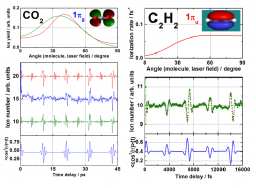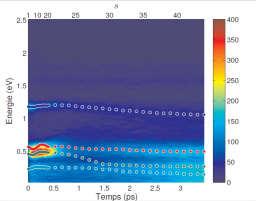Laboratoire Interactions, Dynamiques et Lasers (LIDYL) - CEA-CNRS et Université Paris Saclay


Les activités du Laboratoire Interactions, Dynamiques et Lasers (CEA-CNRS, dans le cadre de l'Université Paris Saclay) sont centrées sur l'interaction rayonnement-matière et concernent des aspects aussi bien physiques que chimiques.
Les programmes de recherche s'étendent des systèmes atomiques et moléculaires simples aux systèmes moléculaires et biomoléculaires complexes jusqu'aux plasmas.
#2300 - Màj : 03/10/2022
Voir aussi
2) Macroscopic response : 2) Macroscopic response
a) Model description:
We solve the wave equation in 2D cylindrical or 3D Cartesian geometry, depending on the problem under consideration, using either a finite difference or a pseudo-spectral method. Different approximations can be made, from the paraxial and slowly varying envelope approximations to the solution of the full wave equation.
ATTOLabThe Platform (Equipments)La Plateforme (Equipements) : The équipments are loacated at the CEA-l’Orme-les-merisiers: two lights sources and associated endstations are dedicated to ultrafast studies in the gas phase and the solid state. They are operated by the ATTOLab partners under coordination of the Laboratory Interactions, Dynamics and Lasers (LIDyL) of CEA-CNRS
Attosecond photoionization spectroscopy : Resolving in time the ultrafast buildup of an autoionizing resonance
Spectroscopy has taught us how the very precise measurement of resonance lineshapes gives insight into the structure of matter. However, as a time-integrated measurement, the spectral lines give only indirect information on the underlying electronic dynamics.
Coulomb explosion imaging : << Back
When several electrons are ejected from a molecule by a femtosecond laser pulse in the 10141015 Wcm-2 intensity range, the Coulomb repulsion between the resulting multicharged atoms leads to fragmentation called Coulomb explosion. The atomic fragments trajectories are determined by their initial positions within the molecule: In principle the molecular geometry may be inferred from these trajectories.
Dispositif EDELWEISS : Ce dispositif expérimental est doté d’un jet versatile couplé à un dispositif d’imagerie de photoélectron et à un spectre de masse à temps de vol. L’objectif de cette expérience est de deux ordres :
- L’étude de la spectroscopie des états de transition de complexes de van der waals.
Exemples d'applications d'impulsions XUV intenses : Les processus cohérents induits dans les atomes et les molécules par un champ laser intense donnent lieu à deux types d'applications. D'une part, la diffraction et la recombinaison radiative du paquet d'ondes électronique (POE) peuvent sonder le système qui a libéré le POE, selon un schéma d' "auto-sonde" ("self-probing").
Femtochimie Organique : La dynamique d'une réaction chimique au voisinage de son état de transition est l'information essentielle qui doit-être obtenues pour prétendre à une vision détaillée du mécanisme de cette réaction.
fs pulse tunability : Regular fs laser provides possibly tunable photons only whithin the broadband of the cristal used, to the detriment of the pulse duration.
Femtochemistry requires photon excitation on the absorption band of the studied system. The challange is also to tune the wavelenght of the pump photon, keeping the feature of the laser in term of pulse duration and with a resonable energy.
Hommage à Bertrand Carré : Hommage à Bertrand Carré
C’est avec une grande émotion que nous apprenons la disparition de notre collègue et ami Bertrand Carré. Il s’est battu avec un courage impressionnant contre la grave maladie diagnostiquée en juillet 2016.
Injection d'un laser à électrons libres : Collaborations : M.-E. Couprie et al., SOLEIL Synchrotron (St-Aubin, France)
T. Hara et al., SPring8 Compact SASE Source (SCSS), XFEL Project/RIKEN (Hyogo, Japon)
L. Giannessi et al., ENEA & INFN/LNF (Frascati, Italie)
Pour produire des impulsions ultra-courtes intenses dans le domaine XUV, les sources dites de 4ème génération pourraient exploiter la combinaison des sources par laser et par accélérateur.
Instrumentation : State-of-the-art research project goes with instrumental developments. When possible these developments are shared to the community through patents or publications.
Ionisation Multiple et Imagerie Moléculaire : L'objectif de ces thématiques est comprendre et contrôler la dynamique de rediffusion en champ laser intense d'un électron avec le cœur ionique, qui conduit à plusieurs processus importants, tels que la diffusion élastique ion-électron, l’ionisation multiple.
LIDYL n'est pas LIDL ! ! : http://iramis.cea.
Microscopic response : a) Model description and method:
We solve the time-dependent Schrödinger equation (TDSE), in the single active electron approximation, on a 1D or 2D Cartesian grid or in 3D spherical geometry. The electron wavepacket (EWP) dynamics is governed here by the static atomic potential and the strong time-dependent laser electric field.
Photo-dynamique et photo-réactivité : La photo-réactivité des molécules et des complexes est étudiée selon 2 approches :
Spectroscopie d'action
La dynamique photo-induite dans le visible-UV de molécules ou complexes de van der Waals de stoechiométrie contrôlées sur les dispositifs EDELWEISS et CICR.
publications on energetic particles :
Balcerzyk A, Baldacchino G.
Implementation of laser induced fluorescence in a pulse radiolysis experiment - a new way to analyze resazurin-like reduction mechanisms
Analyst. 2014;139:1707-12.
Balcerzyk A, Boughattas I, Pin S, Balanzat E, Baldacchino G.
First observation of HO reactivity in water under high energy ions at elevated temperature
PCCP. 2014;16:23975-84.
Baldacchino G.
Water radiolysis with heavy-ion beams at GANIL.
Signal Processing: decomposition of a sequance of photoelectron spectra : Time resolved experiments provides sequance of spectra that requires signal processing to supply the physical or chemical information of interest.
Often, basic approaches gives limited information and are time consuming when experiments are very producing. We are also interrested in developping unsuperveised tools.
This work is done in collaboration with ICUBE/IMAGeS Laboratory
Sofockle laser system and post-compression setup : << Back
The Attophysics group operates the Sofockle laser system which delivers pulses of wavelength 0.8 µm, duration 40 fs, energy 700 µJ with a repetition rate 3 kHz. A post-compression optical bench was implemented in order to reach pulse durations of 10 fs with energy 200 µJ. In addition to experiments of the Attophysics group, the laser system is used by other groups from LIDYL and from Université Paris-Saclay.
Valorisation : L’installation de nouveaux lasers et l’arrivée de nouvelles technologies au laboratoire ont été pour nous l’occasion de réaliser des développements en optique, en instrumentation et en traitement du signal afin de maintenir nos dispositifs et nos moyens d’analyse à la pointe de l'état de l’art. Nous ne perdons pas de vue les possibilités de valorisation de ces développements.














